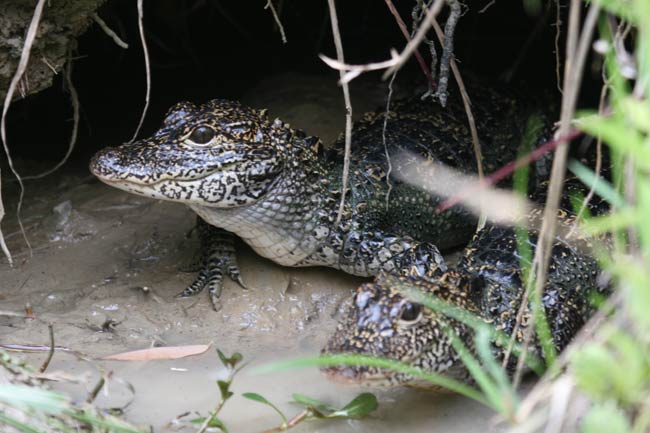Captive Alligators Breed in Wild

A newly discovered set of 15 baby alligator hatchlings marks the successful breeding of a group of once-captive gators that now lives in the wild, it was announced this week.
The baby Chinese alligators, a species that grows to be somewhat smaller than adult American alligators, emerged as part of a 10-year effort to reintroduce these endangered reptiles on Chongming Island, located at the mouth of the Yangtze River in China.
The alligator group that gave birth to the new hatchlings includes four animals from the Wildlife Conservation Society's Bronx Zoo.
"This is fantastic news," said WCS researcher Dr. John Thorbjarnarson, a participant in the project. "The success of this small population suggests that there's hope for bringing the Chinese alligator back to some parts of its former distribution." American alligators, which live in wetlands in the southeastern United States, are the only other living species of alligators. They are not endangered.
{{ video="LS_090715_Chinese-Alligators" title="Alligators Boxed, Shipped, Set Free" caption="Four Chinese alligators from the Bronx Zoo are among a group of once-captive gators that were reintroduced into the wild on Chongming Island, China. The alligators have successfully bred and recently welcomed new baby gators. " }} The Chinese alligator once inhabited a much larger watershed area in Eastern China. However, it is now the most threatened of the crocodilians in the world today, Thorbjarnarson said, and is listed as "critically endangered" on the International Union for Conservation of Nature's Red List of Threatened Species. Back in 1999, the WCS, along with the Anhui Forestry Bureau and the East China Normal University, conducted a survey of Chinese alligators in the Anhui Province — the only remaining location where these reptiles are still found in the wild. The results were bleak, with fewer than 130 animals estimated to be in the population. In 2001, an international workshop recommended that captive alligator species be placed back into the wild. Then, in 2003, three alligators from the Anhui Research Center of Chinese Alligator Reproduction were released. Twelve more animals were later imported to the island, six of which were released in 2007. The alligators were fitted with radio transmitters for remote monitoring before being let free. Researchers said the reintroduced alligators successfully hibernated, and then in 2008, bred in the wild. The baby announcement was made at the International Congress for Conservation Biology, which started July 11 and continues in Beijing, China, through July 16. The reintroduction project is a collaboration between the WCS's Bronx Zoo, the Wildlife Conservation an Management of the State Forestry Administration of China, and others. The project is supported by the Ocean Park Conservation Foundation, Hong Kong.
- Video: See the Alligators Being Transported
- Mystery of Alligator Movement Solved
- Image Gallery: Snakes, Frogs and Lizards
Get the world’s most fascinating discoveries delivered straight to your inbox.



